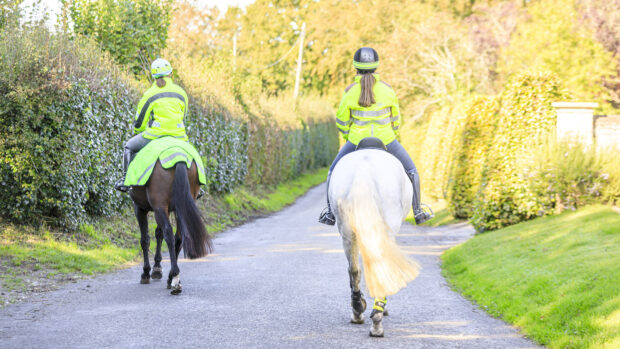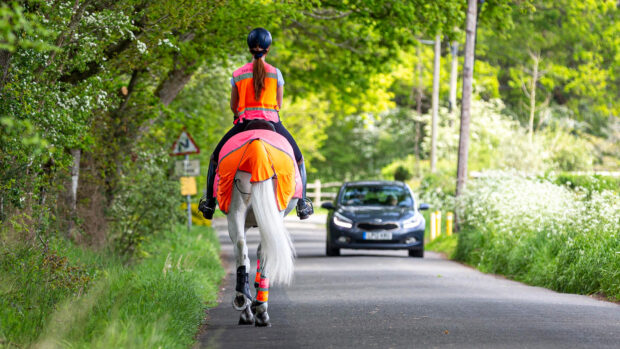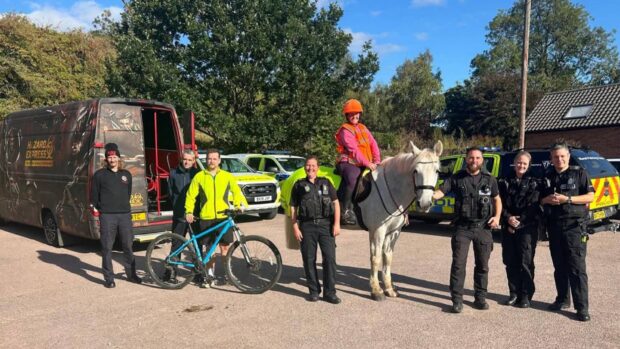A council has turned down a rider’s request to install road safety signs highlighting the Highway Code guidance on how to pass horses, stating that drivers could be “confused” by the advice.
Carla Claver contacted Suffolk County Council to ask for one of the British Horse Society’s (BHS) Dead Slow signs to be installed at Mill Street Lane, Gislingham, having seen pictures of the signs in other areas of the country.
The signs give the Highway Code’s guidance on how drivers should pass horses; at no more than 10mph and at two metres’ distance.
Carla told H&H that the 30mph road is used frequently by riders.
“Drivers use the road as a cut-through between the Bury St Edmunds A143 and the Eye A140 so there can be quite a lot of traffic sometimes,” she said.
“I saw a picture of the signs on Facebook and thought they’d be a good way to educate drivers. We’ve had a couple of near-misses, and just recently I was walking a young horse in hand and I had to stop a car charging towards me. It was an elderly person, who I think just saw a horse and thought they had to put their foot down to get past. So many drivers don’t know how to pass horses.”
On 8 February, Suffolk County Council responded to say it would not support the use of the signs in Suffolk owing to “the mixed messages they provide drivers about the speed limit”.
“They may also distract drivers due to the information at the bottom of the poster signs,” read the response.
Carla said she was disappointed with the response.
“The council is saying the signs could confuse drivers and make them go slower than 30mph, but that’s the whole point,” she said.
Carla went back to the council to contest this, and received a further response that said the signs are not recognised under the Traffic Signs and General Directions 2016.
“Also any poster sign should not be mistaken as a sign by drivers. The poster being suggested has a speed roundel which indicates 10mph, on roads with a speed limit of 30mph or higher, and numerous branded images,” read the response.
“In addition, Suffolk County Council does not have a budget to install, maintain or remove posters. If a customer believes cars are speeding on the section of road then I would suggest they contact SafeCam or the Safer Neighbourhood Team at Suffolk Police.”
H&H contacted the council and was told that the information on the BHS sign “directly conflicts with the speed limit sign in this location and could distract or confuse drivers”. The council added that it welcomes working with the BHS in other ways, such as social media to promote the importance of safer driving around horses.
When H&H queried what was meant by “directly conflicts” when the BHS sign is giving the Highway Code guidance – which applies no matter what the speed limit is in an area – the council said that it does not have any budget to install and maintain any additional signs. The council spokesman added that the council leads a project called Quiet Lanes Suffolk which aims to benefit everyone in the county by creating “quiet lanes” to encourage more walking, cycling, and riding. This project has involved the installation of more than 300 miles of quiet lanes, and 1,100 road signs.
BHS director of safety Alan Hiscox told H&H that by using the incident reporting data recorded on the society’s Horse i app, the BHS is able to “identify hotspot areas” where there have been a high number of equine-related incidents.
“In these areas, we work closely with the local highways authorities to erect temporary information posters which aim to inform drivers how to pass horses safely on the roads,” he said.
“These information posters can be funded by the BHS. There are several different types of posters available, which can be selected by the highway authority to fit the needs of the local area. We have developed many successful partnerships with local authorities across the country and this initiative has successfully highlighted potential road safety issues faced by equestrians.
“We would welcome a conversation with Suffolk County Council about how we can work together to improve safety for horses and riders on Suffolk’s roads.”
You might also be interested in:

More than one horse still dies on British roads every week

New safety feature allows riders to report incidents via app
Riders can report in different categories including road incidents and those involving dogs and cyclists

Subscribe to Horse & Hound magazine today – and enjoy unlimited website access all year round
Horse & Hound magazine, out every Thursday, is packed with all the latest news and reports, as well as interviews, specials, nostalgia, vet and training advice. Find how you can enjoy the magazine delivered to your door every week, plus options to upgrade your subscription to access our online service that brings you breaking news and reports as well as other benefits.




